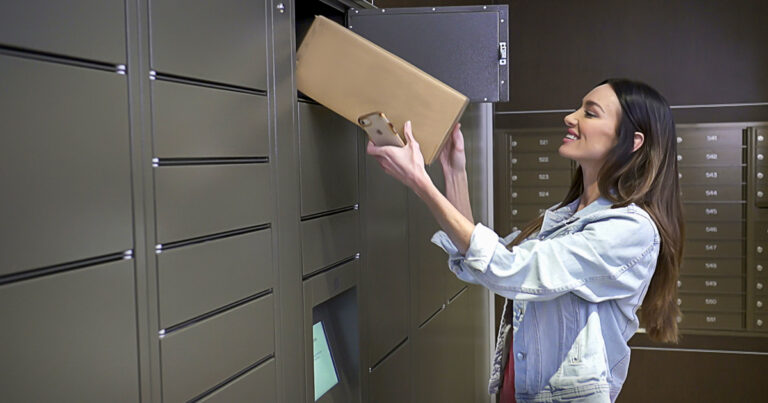Gary Winter, vice president of strategic initiatives at Parcel Pending by Quadient, shares the changes and challenges he thinks couriers and retailers are likely to encounter in 2024.
In 2024, couriers and retailers will be forced to adapt to meet new sustainability demands.
Consumers are demanding more sustainable options, with 31% feeling under pressure to have fewer parcels delivered for economic and environmental reasons. In 2024, retailers and couriers will aim to meet these demands by optimizing parcel deliveries – for instance by taking a closer look at the emissions their delivery routes create.
The 15-minute city is already a reality for many, but 2024 will see the concept spread further across the UK. Retailers and carriers will aim to have parcel lockers in walking distance of every consumer’s home, workplace or other local amenity (like the gym). This will enable delivery companies to drop off multiple parcels at one point, saving unnecessary journeys. Lockers also guarantee delivery on the first attempt, further reducing traffic in neighborhoods. Quadient research shows 42% of consumers feel the number of delivery vehicles in their neighbourhood each day is making the area less pleasant and dangerous. By introducing parcel lockers into the community, retailers and couriers can drive sustainability and help keep streets safe.
But for deliveries to become truly sustainable, green options must be more visible at the decision-making point. For instance, at checkout retailers could tell customers the carbon footprint of each delivery option, enabling them to make an informed decision. Retailers might also offer financial incentives for delivery methods like lockers, making these options cheaper – or even free – to reward green decision making. All in all, sustainability initiatives are no longer just a ‘nice to have’: retailers risk losing customers altogether if they do not make active moves toward a greener future.
2024 will see the rise of ‘friendly fraud’ – with otherwise law-abiding customers taking advantage of loopholes.
Often when an item is left on a customer’s doorstep or a ‘safe place’ near their home, a carrier won’t need (or have time) to ask for the recipient’s signature. This makes it easy for opportunistic customers to claim they never received their package, and request a refund or replacement from the retailer. This is likely to become even more common as carriers become increasingly overwhelmed during peak delivery periods (like the holiday season) and are hit harder by the ongoing cost-of-living crisis.
To prevent instances of this ‘friendly fraud’ increasing, retailers and carriers should look for last mile options that increase the likelihood and accuracy of tracking deliveries. For instance, parcel lockers can keep a digital record of every parcel that has been delivered by a driver and collected by a customer. Recording as much delivery detail as possible enables retailers and carriers to fight back against this new wave of opportunists, giving them confidence about genuine reports of missing parcels – and helping them stamp out false reports from customers looking to get a free pair of trainers or laptop.”
The rise of the resale market will see C2C shipping grow exponentially.
The fashion resale market in the UK has grown massively over the last few years (by 149% between 2016 and 2022, according to GlobalData), and is predicted to rise by 67.5% from 2022 to 2026. Amid the ongoing cost-of-living crisis, resale platforms give sellers an opportunity for an extra stream of income, and buyers a more affordable option. Over the next year, we’re likely to see this trend continue to grow.
To meet this demand from consumers, carriers should focus on their C2C offerings. For instance, some new parcel lockers include an in-built label printer, designed for C2C and C2B shipping. As resale becomes more and more commonplace, carriers should consider how they can make shipping as simple and convenient as possible, to support greener shopping options.
For more opinion content, click here.


